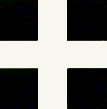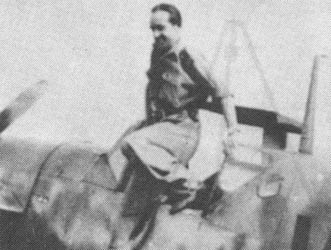Hungary

Százados György ‘Apuka’ Ujszászy
Hungary

Százados György ‘Apuka’ Ujszászy

György Ujszászy was born on 30 May 1912 in Veszprém.
He graduated on 20 August, 1936 as Hadnagy (Second Lieutenant) and bomber pilot.
On 15 March 1939 German troops marched into Prague and the following day Hungarian troops marched into Czechoslovakia to occupy the old border in the Carpathian Mountains.
At this time Ujszászy served in the 3/4. ’Sárkány’ bombazószázad (bomber squadron) and on 16 March he flew his first combat sortie as an observer in a Ju86K-2 (piloted by Százados (Captain) Gyula Vághelyi) on a bombing sortie against the ex-Czechoslovakian troops in the Transcarpathian region.
Later he transferred to fighters and Föhadnagy (Lieutenant) Ujszászy was attached to 1/3. vadászszázad (1/3. Fighter Squadron) at the time of the assault on Soviet Union. The unit was equipped with Fiat CR.42s.
On 27 August, föhadnagy Ujszászy’s section was first over Dniepropetrovsk. The section surprised Soviet fighters taking off. During the combat Ujszászy and törzsörmester (Staff Sergeant) Szobránci claimed two I-17s (LaGG-3 or MiG-3) each while zászlós Szénási claimed a fifth. A sixth aircraft was claimed as a probable. In the evening, the German intelligence confirmed the destruction of at least 5, possibly 6 aircraft.
During the short period from 26 December 1942 to 1 January 1943 he was CO of the 1/1. vadászszázad.
After this he took command over the 5/1. vadászszázad based at Stariy Oskol Airfield in Russia from 1 January 1943. Soviet units encircled the airfield and the radio connection was broken. On 22 January 1943 he started to fly reconnaissance missions and after seeing Soviet tanks all over he decided to evacuate the unit by train and transport planes.
On 27 April he claimed an Il-2 followed by a La-5 the following day. However, because there had been no witnesses to these victories the, 5/I. osztály (Fighter Group) was not officially credited with its first victory until 29 April.
After a re-organisation the unit they took part in the great Kursk battle. During short time he became an ace as the second Hungarian pilot and the first in 1943.
On 7 July he and Szakaszvezetö (Lance-Sergeant) Fábián were on a fighter sortie over the Donietz River and attacked six La-5 fighters. Ujszászy’s bullets hit one of them. The Russian aircraft began to smoke but managed to escape.
It seems that Ujszászy claimed another damaged La-5 north-east of Harkov the next day.
On 1 August Ujszászy and Főhadnagy (Lieutenant) Bejczy took off for a fighter sortie. North of Belgorod they ran into heavy friendly (German) anti-aircraft fire. About the same time Bejczy noticed Russian Pe-2 bombers below them. He radioed Ujszászy who immediately turned behind the Russians and opened fire on the last bomber. Its gunner returned the fire, but apparently he was hit because his gun suddenly fell silent. The bomber suddenly dived on its nose and went into the ground. Seconds later Bejczy shot down a second Pe-2 (his fourth victory).
He left the command of the 5/1. vadászszázad on 4 September 1943.
After re-location to Home Defence he took command of the 1/1. vadászszázad on 1 April 1944.
On 13 April 1944 he scrambled with a flight Bf 109Ga-6s of the 1/1. vadászszázad from Szolnok to intercept raiding American bombers. They tried to join up with 2/1. vadászszázad but run into a formation of unescorted Liberators south of Budapest. They attacked one of the bombers flying at the edge of the formation. Ujszászy and Őrmester (Sergeant) Károly Kereki opened fire on it and brought it down. Kereki was credited with the victory by Ujszâzy, though posthumously. The bomber’s gunners hit his aircraft and he bailed out from the burning machine. Unfortunately his parachute got caught on the plane and he was killed when the aircraft hit the ground.
On 1 May 1944 the 101. Home Defence Fighter Wing was formed and the 1/1. vadászszázad was renamed to the 101/2. vadászszázad (code name “Retek”) and became a part of this Wing. He continued to command the unit until 19 September 1944.
From September 1944 to December 1944 he was the deputy commander of the 101/I. vadászrepülo osztály (fighter group).
Ujszászy ended the war with 2 biplane victories and a total of 7.
After the war he moved to the USA.
He passed away on 2 October 1981 in Pottstown, Pennsylvania.
Claims:
During the war he was decorated with the Magyar Érdemrend Lovagkeresztje hadiszalagon kardokkal, bronze and silver Signum Laudis and the Tuzkereszt (Fire Cross).
| Kill no. | Date | Number | Type | Result | Plane type | Serial no. | Locality | Unit |
| 1941 | ||||||||
| 1 | 27/08/41 | 1 | I-17 | Destroyed | Fiat CR.42 | Dniepropetrovsk area | 1/3. vadászszázad | |
| 2 | 27/08/41 | 1 | I-17 | Destroyed | Fiat CR.42 | Dniepropetrovsk area | 1/3. vadászszázad | |
| 1943 | ||||||||
| 3 | 27/04/43 | 1 | Il-2 (a) | Destroyed | Bf 109F | Kursk area | 5/1. vadászszázad | |
| 4 | 28/04/43 | 1 | La-5 | Destroyed | Bf 109F | Kursk area | 5/1. vadászszázad | |
| 07/07/43 | 1 | La-5 | Damaged | Bf 109F | Donietz River | 5/1. vadászszázad | ||
| 08/07/43 | 1 | La-5 | Damaged | Bf 109F | NE Harkov | 5/1. vadászszázad | ||
| 5 | 13/07/43 | 1 | Il-2 | Destroyed | Bf 109F | Kursk area | 5/1. vadászszázad | |
| 6 | 13/07/43 | 1 | Il-2 | Destroyed | Bf 109F | Kursk area | 5/1. vadászszázad | |
| 7 | 01/08/43 | 1 | Boston (b) | Destroyed | Bf 109F | N Belgorod | 5/1. vadászszázad | |
| 1944 | ||||||||
| 13/04/44 | ˝ | B-24 | Shared destroyed (c) | Bf 109Ga-6 | S Budapest | 1/1. vadászszázad |
Biplane victories: 2 destroyed.
TOTAL: 7 and 1 shared destroyed, 3 damaged.
(a) Not official credited to him since this claim lacked witnesses.
(b) Actually a Petlyakov Pe-2.
(c) Credited to his wingman and thus not included in his total.
Sources:
A "Messzer" Bf 109-ek a Magyar Kiraly Honved Legieroben - Gyorgy Punka, 1995 (kindly provided by Ondrej Repka)
Csaba Stenge: A magyar királyi 1. honvéd éjjeli vadász repülőszázad Magyar Repüléstörténeti Társaság Konferencia Közleményei 1999 kindly provided by Csaba Stenge
Biplane Against The Red Bear - Julius R. Gaal, 1974 Air Combat Spring/1974 kindly provided by Santiago Flores
Hajra (Historie a plastikove modelarstvi, 8-9/94) - Ondrej Repka, 1994
Harcok az orosz égen Budapest - László Tomor, 1942 kindly provided by Csaba Stenge
Hungarian Aces of World War 2 - György Punka, 2002 Osprey Publishing, Oxford, ISBN 1-84176-436-1
"Messer" The Messerschmitt 109 in the Royal Hungarian "Honvéd" Air Force - Gyorgy Punka, 1995
Additional information kindly provided by Csaba Stenge.


